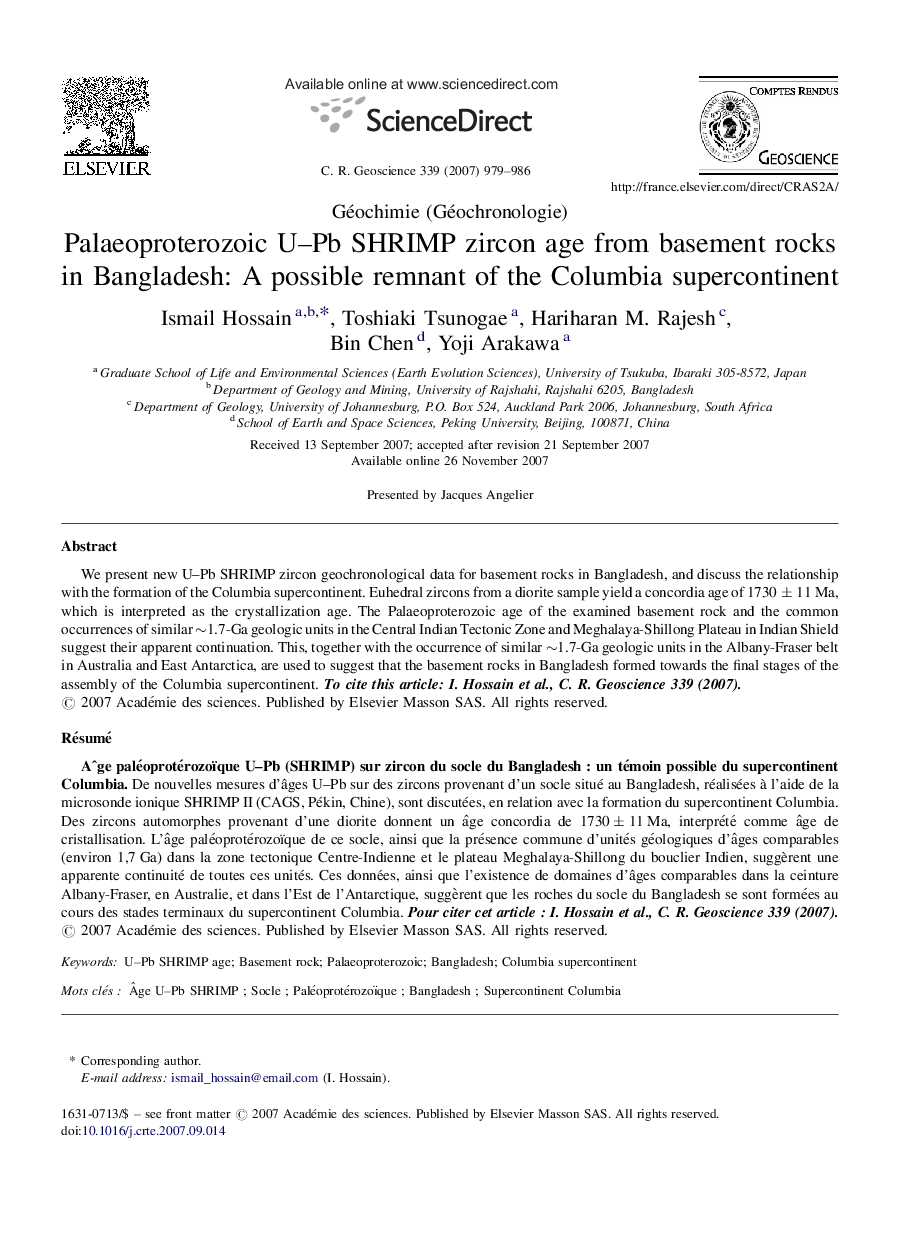| کد مقاله | کد نشریه | سال انتشار | مقاله انگلیسی | نسخه تمام متن |
|---|---|---|---|---|
| 4463088 | 1313548 | 2007 | 8 صفحه PDF | دانلود رایگان |

We present new U–Pb SHRIMP zircon geochronological data for basement rocks in Bangladesh, and discuss the relationship with the formation of the Columbia supercontinent. Euhedral zircons from a diorite sample yield a concordia age of 1730 ± 11 Ma, which is interpreted as the crystallization age. The Palaeoproterozoic age of the examined basement rock and the common occurrences of similar ∼1.7-Ga geologic units in the Central Indian Tectonic Zone and Meghalaya-Shillong Plateau in Indian Shield suggest their apparent continuation. This, together with the occurrence of similar ∼1.7-Ga geologic units in the Albany-Fraser belt in Australia and East Antarctica, are used to suggest that the basement rocks in Bangladesh formed towards the final stages of the assembly of the Columbia supercontinent.
RésuméDe nouvelles mesures d’âges U–Pb sur des zircons provenant d’un socle situé au Bangladesh, réalisées à l’aide de la microsonde ionique SHRIMP II (CAGS, Pékin, Chine), sont discutées, en relation avec la formation du supercontinent Columbia. Des zircons automorphes provenant d’une diorite donnent un âge concordia de 1730 ± 11 Ma, interprété comme âge de cristallisation. L’âge paléoprotérozoïque de ce socle, ainsi que la présence commune d’unités géologiques d’âges comparables (environ 1,7 Ga) dans la zone tectonique Centre-Indienne et le plateau Meghalaya-Shillong du bouclier Indien, suggèrent une apparente continuité de toutes ces unités. Ces données, ainsi que l’existence de domaines d’âges comparables dans la ceinture Albany-Fraser, en Australie, et dans l’Est de l’Antarctique, suggèrent que les roches du socle du Bangladesh se sont formées au cours des stades terminaux du supercontinent Columbia.
Journal: Comptes Rendus Geoscience - Volume 339, Issue 16, December 2007, Pages 979–986